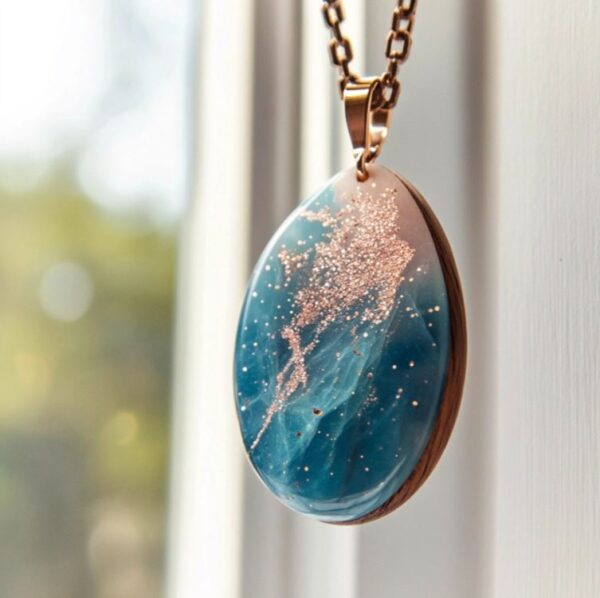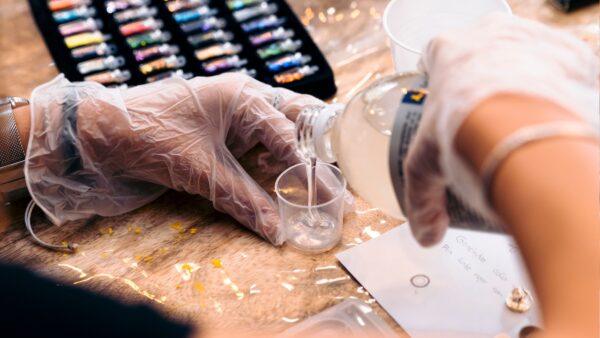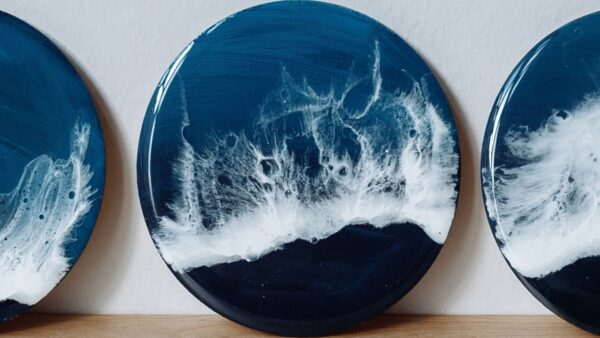How To Get Resin Off Of Hands & Skin [Don’t Use Chemicals]
Hey Crafters! This is a guide on how to get resin off of hands and skin. We’ve all been there – in the midst of a creative project, happily working with resin, and suddenly, oops! It’s on our hands and skin.
While getting messy is all part of the crafting fun, dealing with resin on your skin might seem like a sticky situation. But fear not! This guide is here to rescue you from those resin mishaps.
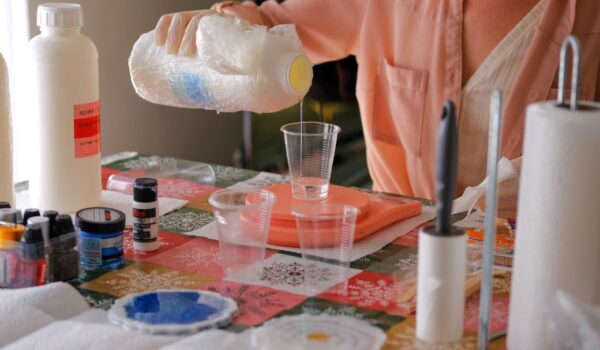
Whether you’re a seasoned crafter or just starting your DIY journey, we understand the struggle of trying to figure out how to get rid of resin on your hands.
In this article, we’ll break down simple and practical ways to tackle this issue. So, let’s dive in and learn how to bid farewell to resin on your hands and get back to the joy of creating!
What Is Resin?
Resin is a versatile and viscous substance derived from organic compounds, typically secreted by trees or produced synthetically.
In crafting and DIY projects, epoxy resin, a popular synthetic variant, is often used for its adhesive and glossy properties.
It consists of two main components, a resin and a hardener, which, when combined, undergo a chemical reaction resulting in a durable and transparent material.

UV resin, short for ultraviolet resin, is a type of liquid resin that cures or hardens when exposed to ultraviolet (UV) light. UV resin typically comes in a liquid form and remains pliable until exposed to UV light, such as sunlight or a UV lamp.
However, its sticky nature also poses a challenge when it comes into contact with skin, necessitating effective removal techniques for crafters who find themselves unintentionally adorned with its clingy presence.
How To Get Resin Off Hands And Skin
1. Use Soap & Water To Remove Resin
Using soap and water is one of the simplest yet effective methods to remove resin from hands and skin. As soon as resin comes into contact with your skin, wash the affected area thoroughly with soap and water.
The soap works by breaking down the resin, while water helps to rinse away the residue. It’s essential to act promptly, ideally before the resin has fully cured, for the best results. You can also try this for when you need to remove resin epoxy adhesive.
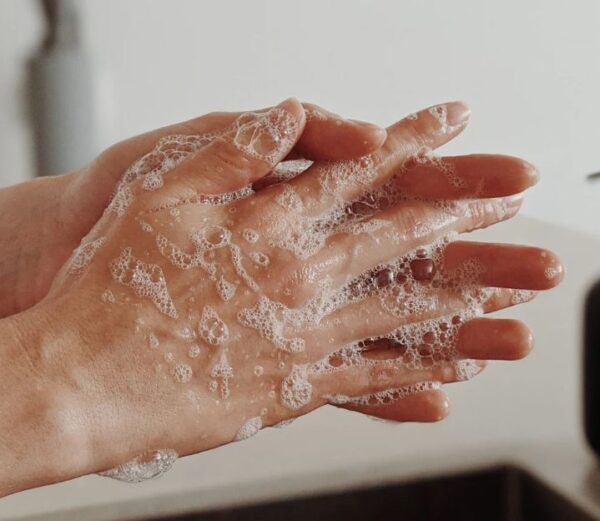
Gently scrubbing your hands with soap and water not only aids in removing the resin but also prevents potential skin irritation.
This method is easily accessible, making it a go-to solution for crafters seeking a quick and hassle-free way to clean up after their creative endeavors.
2. Use Olive Oil Or Baby Oil
When it comes to removing resin from hands and skin, oils like cooking oil or baby oil can be surprisingly effective.
These oils work by breaking down the adhesive properties of the resin, making it easier to lift off the skin.
To use this method, generously apply the oil to the affected area, ensuring thorough coverage. Allow the oil to soak in for a few minutes, then gently massage the resin residue.

The combination of the oil’s lubricating properties and its ability to weaken the resin bond facilitates the removal process.
Afterward, wash the area with soap and water to eliminate any remaining oil or resin.
This approach is particularly helpful for those with sensitive skin, providing a gentle yet efficient solution for tackling unwanted resin encounters during crafting sessions.
3. Use Baby Wipes
In a pinch, baby wipes can serve as a convenient and efficient solution for removing resin from hands and skin.
These wipes are often gentle on the skin while still being effective in breaking down and lifting resin residue.
Begin by wiping the affected area with a baby wipe, ensuring thorough coverage. The moisture in the wipes helps to soften the resin, making it easier to remove.
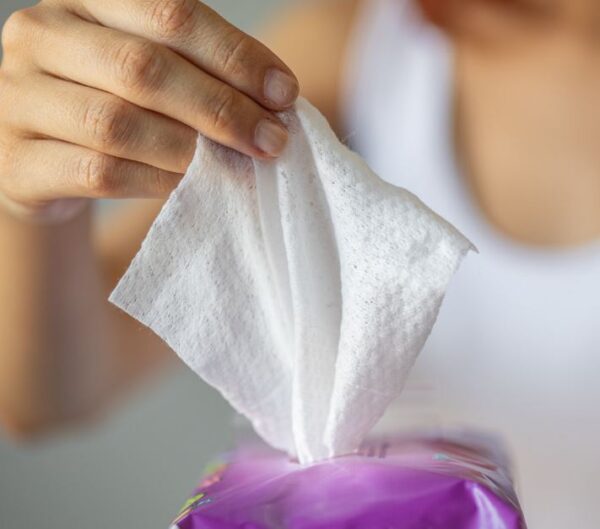
Follow up with gentle rubbing or massaging to facilitate the process. Once the majority of the resin is lifted, wash the hands or skin with soap and water to ensure a clean finish.
The portability and ease of use make baby wipes a handy option for crafters looking for a quick cleanup solution, especially when working in locations without immediate access to running water or other cleaning agents.
4. DIY Sugar Scrub
For stubborn resin that seems resistant to the above removal methods, a mixture of sugar, soap and oils can be an effective solution.
One time I was reaching into my craft bin and the UV resin I was using dripped out and got all over everything! Before I realized it, I had sticky resin all over my hands, it was not good! So I used a sugar scrub to get the majority of it off and then followed up with olive oil. Now I make sure my resins are sealed up in a ziplock.
Create a paste by combining sugar, liquid soap and olive oil, forming a gritty yet spreadable consistency.
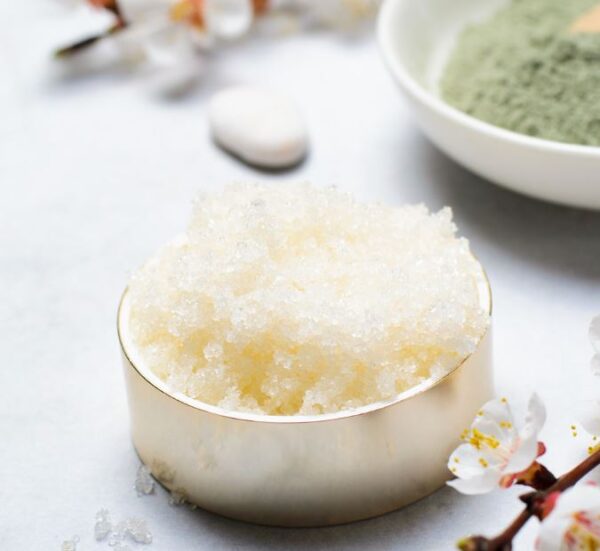
Apply the mixture to the affected area, gently scrubbing in circular motions. The sugar acts as a mild abrasive, helping to break down the resin, while the soap and oil aids in loosening its grip on the skin.
Continue massaging the paste for a few minutes, allowing it to work on the stubborn resin.
Afterward, rinse the area thoroughly with warm water. This method provides an additional level of abrasion that can be particularly useful for persistent resin remnants.
Always remember to moisturize the skin after using this method to counteract any potential drying effects from the soap.
5. Resin Gel Cleanser
A formulated resin gel cleanser is a purpose-designed product tailored for effectively and safely removing resin from hands and skin.
These cleansers typically contain specialized ingredients that break down and lift resin residue.
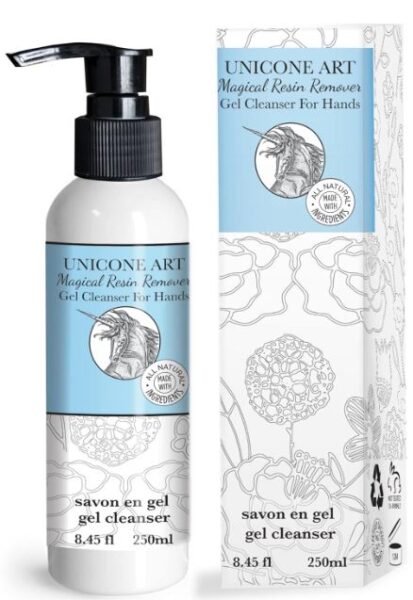
To use, apply the gel cleanser directly onto the affected area and gently massage it in. Allow the cleanser to sit for the recommended duration, as per the product instructions, to ensure optimal resin breakdown.
The gel consistency adheres well to the resin, facilitating its removal. After the specified time, rinse the cleanser off thoroughly with soap & water.
Common Ways That You Might Get Resin On Your Skin
1. Mixing and Pouring:
When preparing resin for a project, the process often involves measuring, mixing, and pouring. Accidental spills or splatters can result in resin coming into contact with hands.

2. Molding and Shaping:
Crafting with resin often involves molding and shaping the material into desired forms. Hands are actively engaged in these processes, increasing the likelihood of resin getting on the skin. Always protect your hands when using resin putty.
3. Coating Surfaces & Pouring:
Applying resin as a coating or sealant on various surfaces, such as tabletops or artwork, may lead to direct skin contact, especially if hands are used to spread or smooth the resin.
Do not use hands for moving the resin around in the forms. Use a silicone spatula or tools made for resin if you need to blend colorants or to add glitter.
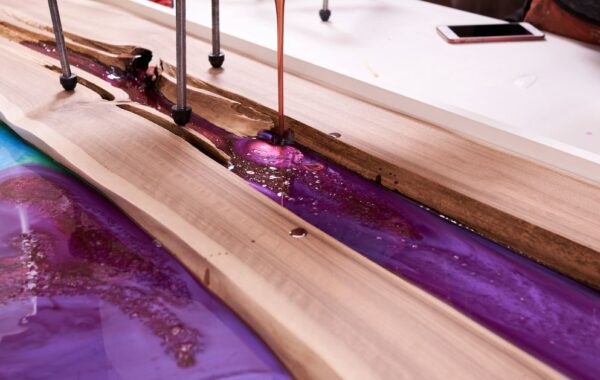
4. Embedding Objects:
In projects where items like flowers, charms, or other objects are embedded in resin, hands are used to position and arrange these elements, leading to potential resin contact.
The best way to position embedded objects is with long wooden skewers, not your hands.

5. Jewelry Making:
Crafters working on intricate jewelry pieces may find themselves handling small amounts of resin, and the precision required can sometimes result in accidental skin contact.
6. Cleanup:
Even during the cleanup phase, when crafters are wiping down tools, surfaces, or their hands, there is a chance of resin transfer.
7. Resin Art Techniques:
Various artistic techniques, such as creating resin geodes or pouring resin onto art, may involve manipulating resin with brushes, or tools, increasing the risk of skin exposure. Always use gloves and try your best not to touch the resin with your hands.

8. Inadequate Protection:
Not wearing sufficient protective gear, such as gloves, can leave hands vulnerable to resin contact, especially for those new to working with the material.
Being aware of these common scenarios can help crafters take precautions to minimize the risk of resin coming into contact with hands and skin.
Always use nitrile gloves when working with resin.
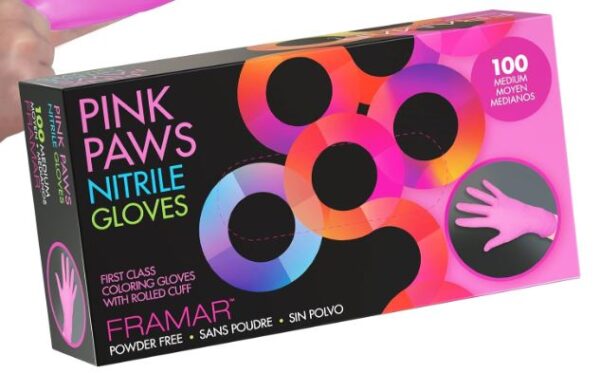
Importance Of Taking Precautions To Prevent Resin Exposure On Skin
Taking precautions to prevent resin exposure is crucial for a safe and enjoyable crafting experience. While resin is a fantastic medium for creative projects, it can be sticky and challenging to remove from the skin.
Wearing appropriate protective gear, such as the proper gloves, is a simple yet effective measure that significantly reduces the risk of direct contact.
Be sure to check out our resin safety guide. It provides valuable insights and tips to help you navigate your crafting journey with confidence and peace of mind. Remember, a pair of gloves can make all the difference in keeping your hands protected and your focus on the joy of creating!

Precautions & Tips For Removing Resin From Skin
1. Patch Tests
Before applying any resin removal method, it’s best to test it on a small area of the skin.
This precaution allows you to assess how your skin will react to the chosen method and ensures that there are no adverse effects, such as irritation or allergies.
Everyone’s skin is different, so what works well for one person may not be suitable for another.
By conducting a patch test, you can determine the effectiveness and safety of the chosen resin removal technique without risking widespread exposure.
2. Do Not Use Any Chemicals To Remove Resin From Skin
Harsh solvents and abrasive materials may exacerbate skin sensitivity, leading to irritation or discomfort. When doing a search on how to remove resin from hands and skin, you may see some suggestions using alcohol or acetone.
Never use chemicals to remove resin from skin.
Always prioritize your skin’s health and well-being, and if you have a history of skin sensitivities, choose resin removal methods that are known for their mildness and compatibility with sensitive skin.
Additionally, consider consulting with a dermatologist for personalized advice on handling resin exposure based on your skin type and any existing conditions.
3. Seek medical attention for persistent or severe cases
In instances where resin exposure leads to persistent irritation, redness, or any severe reaction, it’s essential to seek prompt medical attention.
A healthcare professional can assess the situation, provide appropriate treatment, and offer guidance on how to manage any potential complications.
Persistent skin issues may indicate an allergic reaction or other underlying problems, making professional advice crucial for ensuring your well-being.
Don’t hesitate to consult a doctor if you experience prolonged discomfort or adverse reactions despite attempting various resin removal methods.
What To Avoid
Do Not Use These Chemicals To Remove Resin:
- Rubbing Alcohol
- Acetone
- Mineral Spirits
Chemicals used to remove resin may react adversely with the skin, potentially causing irritation, redness, or allergic reactions due to individual sensitivities; moreover, certain harsh solvents might negatively interact with resin, making it essential to choose removal methods carefully.
FAQ’s About Removing Resin From hands And Skin
Yes, using regular hand soap is a good starting point. Soap helps break down the resin, making it easier to wash away. However, for stubborn cases, you may need additional methods like oils or specialized resin cleansers.
If you have sensitive skin, it’s advisable to avoid harsh chemicals. Opt for milder solutions such as oils (cooking oil or baby oil) or soap and water. Conduct a patch test before widespread application to ensure compatibility.
Act as soon as possible. Prompt removal, preferably before the resin fully cures, enhances the effectiveness of the chosen method. The longer resin stays on the skin, the more challenging it becomes to clean.
No, it is not recommended to use nail polish remover (acetone) as a primary method to remove resin from the skin. While acetone is a powerful solvent that can break down resin, it is also harsh on the skin and may lead to dryness or irritation.
If you experience skin irritation, redness, or an allergic reaction, discontinue the use of the resin removal method. Wash the area with mild soap and water and consider seeking medical advice if the irritation persists or worsens.
In Closing: Thank you for taking the time to explore our guide on removing resin from hands and skin! We hope you found valuable tips to make your crafting experience smoother.
Crafting with resin can lead to unexpected adventures, and we’d love to hear about your own resin stories and triumphs.
Share your tips, challenges, or creative successes in the comments below. Your experiences not only contribute to our crafting community but may also provide insights and inspiration for fellow crafters.
Happy crafting, and may your resin adventures be as delightful as they are sticky-free!
Next, read our guide on how to get uncured resin out of molds.

